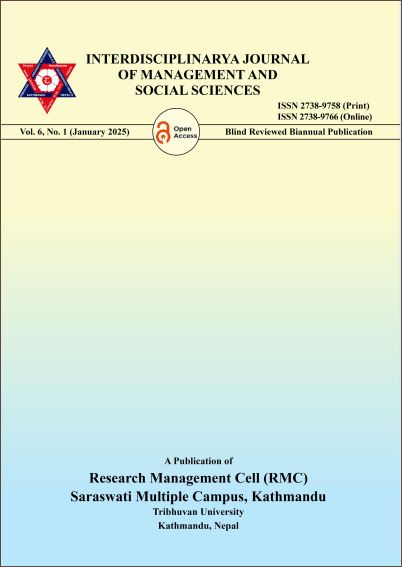Demographics-Urbanization Interrelationship in Nepal
DOI:
https://doi.org/10.3126/ijmss.v6i1.75409Keywords:
Challenges, demographics, municipal, problems, urbanizationAbstract
In order to understand demographic-urbanization interrelationship in the Nepalese context based on three sources of data (e.g., World Bank, UN and 2021 National Population and Housing Census), the article presented some demographic variables (e.g., crude birth rate, fertility rate, life expectancy at birth, infant mortality, and migration) and percentage of urban population residing in Nepal during 1960-2022. These demographics played vital role in the level of urbanization. The plausible reason is that crude birth rates, fertility rates, and infant mortality rate have been declining gradually whereas life expectancy at birth and migration rates have been rising since 1960-2022. The paper also reviewed definition of urbanization in Nepal, indicating there is problems of definition of urbanization in Nepal. The sister organization of Government of Nepal (GoN), e.g., National Statistics Office (NSO) has introduced 3-categrory of new classification (e.g. urban, per-urban and rural) based on wards of municipals. The paper suggests that such classifications are significant to carry out research in the future in addition to restructuring the existing urban-rural definitions.
Downloads
Downloads
Published
How to Cite
Issue
Section
License

This work is licensed under a Creative Commons Attribution-NonCommercial 4.0 International License.

